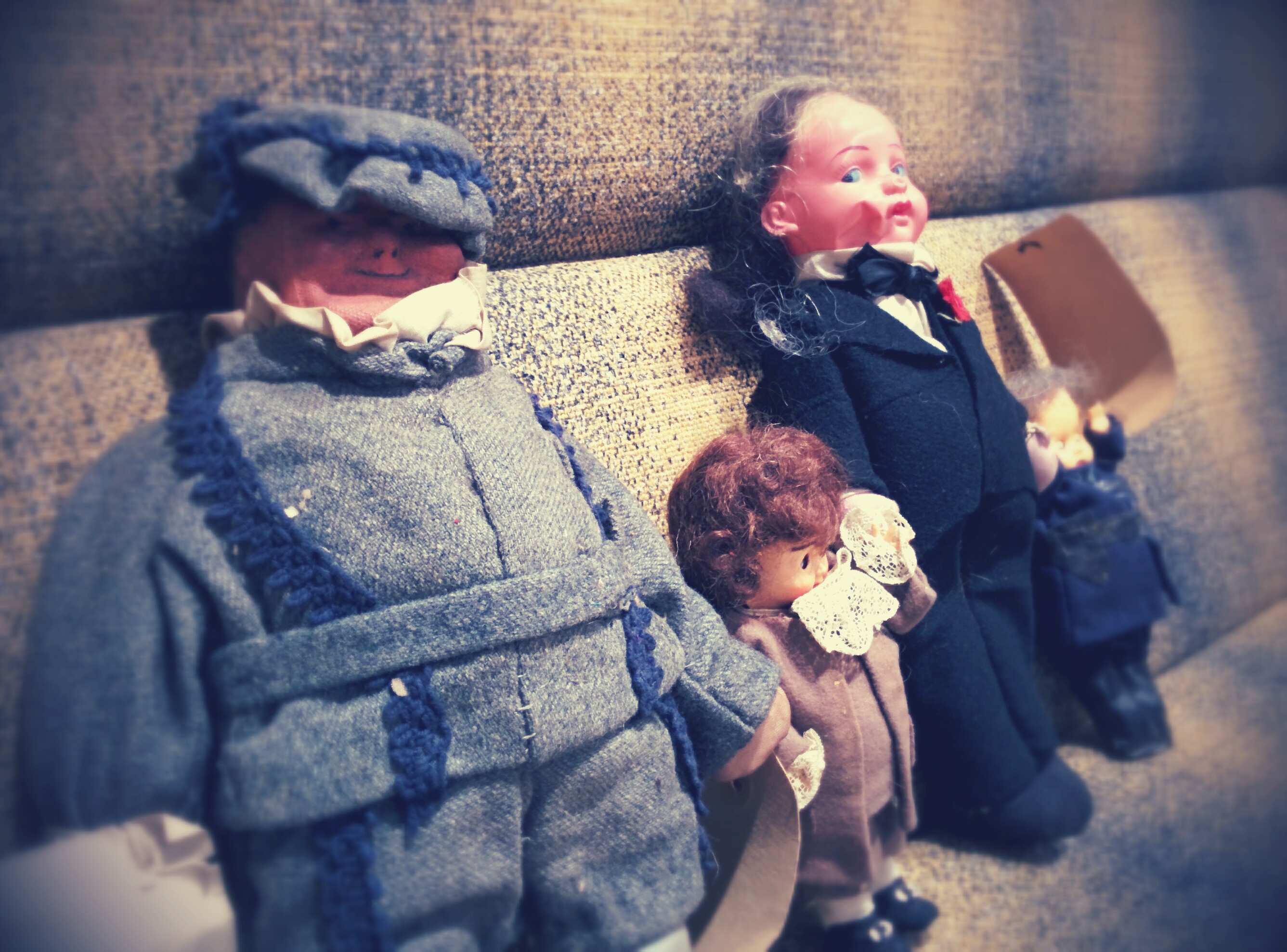It’s halloween in the world of men, and we’ve been having a look through our collections to see if we can reflect some human phobias in archive form!
The most obvious candidate for an archive would be a fear of dust, which is amathophobia. Luckily, the cleaning schedule for our new PD5454 repository means we don’t have much of that anymore, and the amazing work done by our volunteers over the summer makes it less likely to find on our collections too!
Those with a fear of dolls (pediophobia) might want to look away now. We’ve actually found a few in the archive of the Huddersfield Amateur Operatic Society that seem to have been donated as tributes to some of the characters featuring in their 1930s productions. The detail on their faces and put into their clothing is quite remarkable for the period, however if you take them out of context and arrange them on a Heritage Quay sofa in a Halloween-esque pose…well they start to look ever so slightly creepy!
Worse still to have a fear of papyrophobia (fear of paper) in an archive! However, the great thing about Heritage Quay is that you can engage with the archive in their digital form through our touch tables and curvy screens, so you never have to expose yourself to your greatest fear!
Unfortunately we can’t do anything for you if you have a fear of orange (chrysophobia). It’s in our logo and we love it! Sorry! Happy Halloween everyone!
NB. – If you’re visiting the Huddersfield Family History Fair on the 8th November, then look out for our Participation Officer, David Smith, talking about our new centre. Our Explore Your Archive box will also be on our stand for you to look at!




